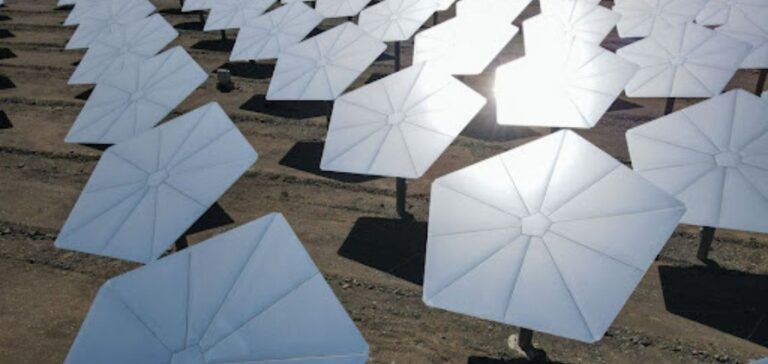China’s energy sector reaches a crucial milestone with the completion of a large-scale project in Bortala (China), combining 100,000 kilowatts of concentrated solar power with thermal storage and 900,000 kilowatts of photovoltaic generation.
This infrastructure, piloted by Xinhua Power Generation, is part of the national energy diversification strategy, offering a total capacity of one gigawatt, now ready to be integrated into the power grid.
The special feature of this project is the integration of heat storage technology with solar concentration, optimizing the use of solar resources.
The plant is expected to produce 2.04 billion kilowatt-hours annually, while significantly reducing coal consumption by an estimated 620,000 tonnes per year, and cutting CO2 emissions by around 1.69 million tonnes.
Optimizing network connections
To ensure efficient integration of this new capacity, State Grid Bortala Power Supply Company implemented innovative grid connection strategies.
Technical meetings were held to fine-tune disconnection and connection plans, ensuring a smooth transition for the new infrastructure.
Optimized connection processes and personalized follow-up were crucial to ensure a smooth commissioning.
The project also benefited from the technical expertise of the Communist Party members’ service team, who played a key role in coordinating connection services, both online and in the field.
This support made it possible to overcome the technical challenges, ensuring that the new installations were synchronized with the existing infrastructure.
Implications for energy in Xinjiang
This project is part of a series of initiatives to boost renewable energy production in Xinjiang.
The emphasis on technological integration and optimization of local resources positions this region as a key player in the national energy strategy.
What’s more, the economic spin-offs are significant, with an increase in energy production while helping to reduce dependence on fossil fuels.
The gradual commissioning of these facilities marks a turning point in the region’s approach to energy production, with a particular focus on infrastructure reliability and operational efficiency.
Further development of transmission capacity is envisaged to support future expansion and strengthen the integration of renewable sources.






















